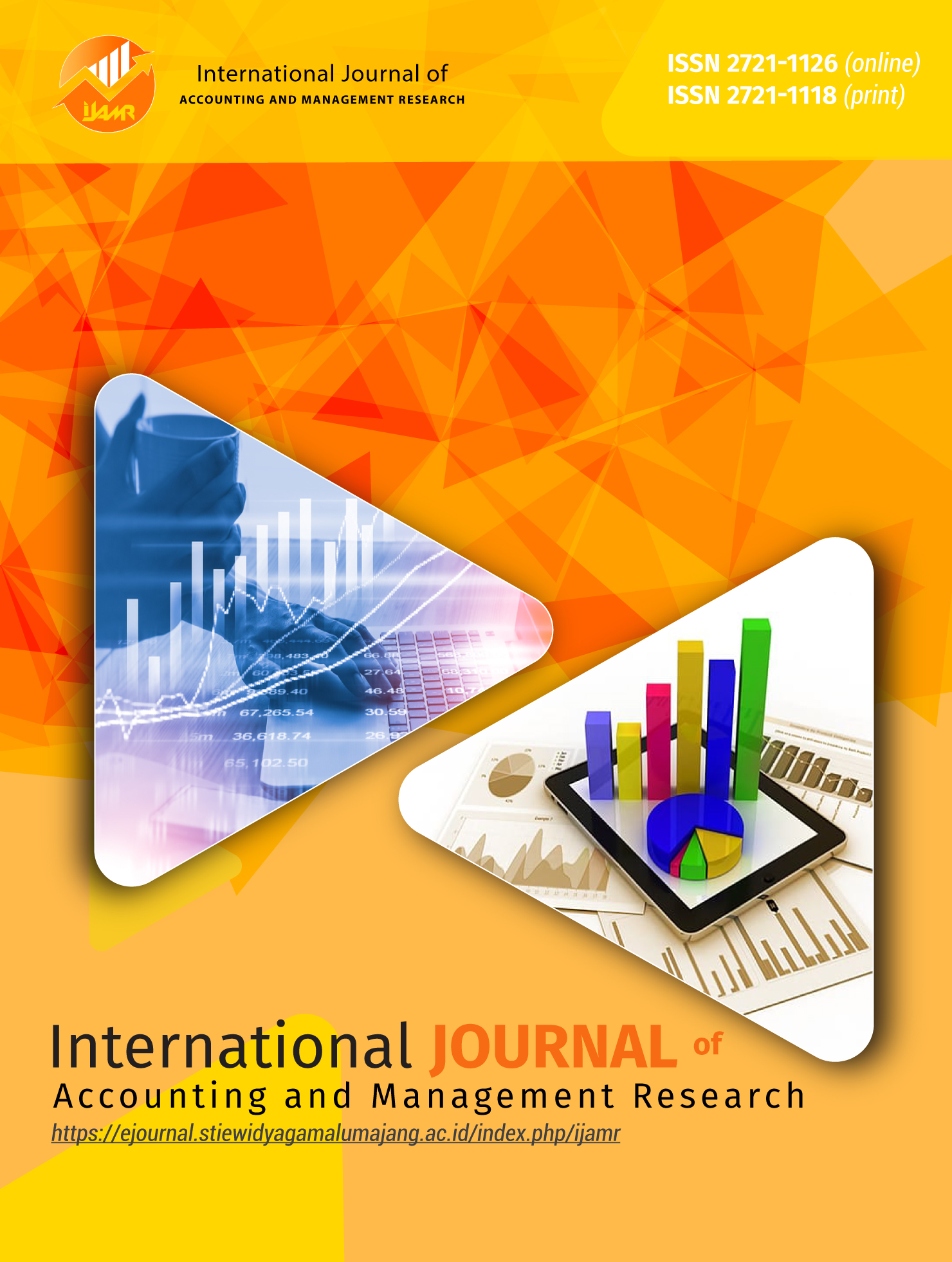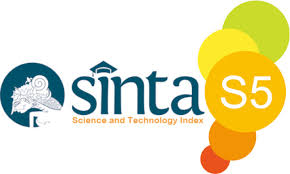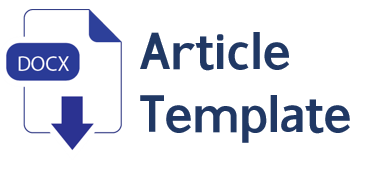Discretionary Accruals: Detecting the Quality of Earnings Using Corporate Governance, Firm Size and Leverage
DOI:
https://doi.org/10.30741/ijamr.v4i2.1350Keywords:
Corporate Governance, Discretionary Accruals, Earnings Quality, Leverage, SizeAbstract
This research is designed to explain the influence of leverage, size and corporate governance proxied by the audit committee independent commissioners on earnings quality as measured using discretionary accruals directly and through the moderating variable family ownership. Data was obtained from the financial reports of companies that met the sample criteria of 644 manufacturing companies in 2019-2022. The data analysis method uses descriptive analysis. The results showed that each variable has a different effect, such as the audit committee and leverage variables, there is no effect on earnings quality, this shows that the presence or absence of an audit committee and high or low does not encourage companies to make discretionary accruals, while the independent commissioner variable has a negative and significant effect on earnings quality, then company size has a positive effect on earnings quality. This research provides insight into the importance of corporate governance and its practical implications to assist company stakeholders in optimising corporate governance policies and earnings management strategies.
References
Akerlof, George A. 1970. The Market for Lemons: Quality Uncertainly and the Market Mechanism, Quarterly Journal of Economic, Vol. 84 No. 3, pp. 488- 500.
Amin, A. (2016). Independensi Komite Audit , Kualitas Audit dan Kualitas Laba: Bukti Empiris Perusahaan dengan Kepemilikan Terkonsentrasi. Jurnal Akuntansi Dan Keuangan, 18(1), 1–14. https://doi.org/10.9744/jak.18.1.1-14
Ang,J.,ColeR.,LinJ.,(2000).Agency costs and ownership structure, Journal of Finance, 5, 81-106.
Antonino, N. (2013). Corporate Transparency : A Perspective from Thomas Aquinas ’ Summa Theologiae. 639–648. https://doi.org/10.1007/s10551-013-1682-6
Ball, R., dan Kothari. 2013. Econometric of the Basu Asymmetric Timeliness Coefficient and Accounting Conservatism. Journal of accounting research, Vol 51, issue 5, 1071-1091
Beaver, W., Landsman, W., dan Owens, E. (2012). Asymmetry in Earnings Timeliness and Persistence: A Simultaneous Equations Approach. Review of accounting studies.vol 17(4), 781–806.
Bhaumik, S. K., Driffield, N., & Pal, S. (2010). Does ownership structure of emerging market firms affect their outward FDI? The case of Indian automotive and pharmaceutical sectors. Journal of International Business Studies, 41(3), 437–450.
Bowen, R. M., & Venkatachalam, M. (2008). Accounting Discretion, Corporate Governance, and Firm Performance *. 25(2), 351–405. https://doi.org/10.1506/car.25.2.3
Budianto, R., Samrotun, Y. C., & Suhendro. (2018). Pengaruh Good Corporate Governance (GCG) terhadap Kualitas Laba pada Perusahaan Manufaktur yang Terdaftar di BEI 2015-2017. Seminar Nasional Dan Call Paper: Manajemen, Akuntansi Dan Perbankan, 411–424.
Chandrarin, G. (2021). Metode Riset Akuntansi Pendekatan Kuantitatif, Salemba Empat.
Chatterjee, D. K. (2011). Organization for Economic Cooperation and Development (OECD). In Encyclopedia of Global Justice (p. 785). Springer.
Claessens, S. S., Djankov, S., Fan, J., & Lang, L. H. P. (2002). Disentangling the incentive and entrenchment effects of large shareholdings. Journal of Finance, 57(6), 2741–2771.
DeAngelo, H., DeAngelo, L, Skinner, D. (2009). Corporate Payout Policy. Foundations and Trends in Finance, Vol. 3, Nos. 2, 95–287.
DeAngelo, H., DeAngelo, L. (2000). Controlling stockholders and the disciplinary role of corporate payout policy: a study of the Times Mirror Company. J. Financ. Econ.56, 153–207.
Dechow, P., Ge, W., & Schrand, C. (2010). Understanding earnings quality : A review of the proxies, their determinants and their consequences $. Journal of Accounting and Economics, 50(2–3), 344–401. https://doi.org/10.1016/j.jacceco.2010.09.001
Dewantari, Ni Luh Surpa, Wayan Cipta, and Gede Putu Agus Jana Susila. 2019. “Pengaruh Ukuran Perusahaan Dan Leverage Serta Profitabilitas Terhadap Nilai Perusahaan Pada Perusahaan Food and Beverages Di Bei.” Jurnal Manajemen Dan Bisnis 5 (2): 74.
Eisenhardt. (1989). Agency Theory: An Assessment and Review (pp. 57–74).
Faisal. (2005). Analisis Agency Costs, Struktur Kepemilikan dan Mekanisme Corporate Governance. Simposium Nasional Akuntansi VII Denpasar. 2-3 December 2005.
Guna, W.I., & Herawati. 2010. Pengaruh Mekanisme Good Corporate Governance, Independensi auditor, kualitas audit dan factor lainnya terhadap manajemen laba. Jurnal Bisnis Dan Akuntansi. 12( 1).53- 6
Farooq, O., Shehata, N. F., & Nathan, S. (2018). Earnings response coefficient in the MENA region. Applied Economics Letters, 25(16), 1147–1152. https://doi.org/10.1080/13504851.2017.1403550
Ghozali, I. (2012). Aplikasi Analisis Multivariete. Semarang: Badan Penerbit Universitas Diponegoro.
Hapsoro, Dody, and Zaki Naufal Falih. 2020. “The Effect of Firm Size, Profitability, and Liquidity on The Firm Value Moderated by Carbon Emission Disclosure.” Journal of Accounting and Investment 21 (2)
Isakov, Dusan, dan Weisskopf, Jean-Philippe. (2015). Payout policies in founding family firms. Journal of Corporate Finance, Vol. 33, pp. 330-344.
Jensen, M. C., & Meckling, W. H. (1976). Theory of the firm: Managerial behavior, agency costs and ownership structure. Journal of Financial Economics, V. 3, No., V. 3, No. 4,. https://doi.org/10.2139/ssrn.94043
Jensen, M. C., & Meckling, W. H. (1986). Theory of the Firm : Managerial Behavior, Agency Costs and Ownership Structure Theory of the Firm : Managerial Behavior, Agency Costs and Ownership Structure.
Khafid, M., & Arief, S. (2018). Managerial Ownership, Corporate Governance and Earnings Quality: The Role of Institutional Ownership as Moderating Variable. Pertanika J. Soc. Sci. & Hum, 25(5), 241–254.
Khasanah, N., & Kartika, A. (2022). Pengaruh Komisaris Independen, Reputasi KAP, Persistensi Laba dan Struktur Modal Terhadap Kualitas Laba Perusahaan Sektor Food and Beverage di Bursa Efek Indonesia Tahun 2015 –2019. Media Bina Ilmiah, 16(12), 7849–7862.
Komite Nasional GCG. (2002). Pedoman Pembentukan Komite Audit yang Efektif. 1–18.
La Porta, R., Lopez-de-Silanes, F., Shleifer, A., Vishny, R., (2000). Agency problems and dividend policies around the world. J. Financ. 55, 1–33.
Lang, M., Raedy, J. S., & Wilson, W. (2006). Earnings management and cross listing: Are reconciled earnings comparable to US earnings? Journal of Accounting and Economics, 42(1), 255–283.
Loder, T., Alstyne, M. Van, & Wash, R. (2004). Information Asymmetry and Thwarting Spam. 6(c).
Mashayekhi, B., & Bazaz, M. S. (2010). The effects of corporate governance on earnings quality: Evidence from Iran. Asian Journal of Business and Accounting, 3(2), 71–100.
Mathova, A., Perdana, H. D., & Rahmawati, I. P. (2017). Pengaruh Kepemilikan Keluarga dan Good Corporate Governance Terhadap Kualitas Laba dan Kinerja Perusahaan. SAR (Soedirman Accounting Review): Journal of Accounting and Business, 2(1), 73–100. https://doi.org/10.20884/1.sar.2017.2.1.405
Miller, D. & Le Breton-Miller, I. (2003). Challenge versus advantage in family business. Strategic Organization, 1(1), 127–134.
Moradi, M. (2010). A Study of the Effect of Financial Leverage on Earnings Response Coefficient through Out Income Approach : Iranian Evidence. 2(2), 103–115.
Morris, R. D. (1987). Signalling, agency theory and accounting policy choice. Accounting and Business Research, 18(69), 47–56.
Myers, S. (2007). Capital Structure, Journal of Economic Perspectives, 15(2), 81–102.
Nasution, M dan Setiawan, D. 2007. Pengaruh Corporate Governance Terhadap Manajemen Laba di Industri Perbankan. Simposium Nasional Akuntansi X, Makassar.
Nugroho, Y. P., Setiawan, D., & Wedari, L. K. (2022). the Role of the Audit Committee in Accounting and Finance Expertise on Earnings Quality. Corporate Governance and Organizational Behavior Review, 6(2), 41–51. https://doi.org/10.22495/cgobrv6i2p4
Oktaviani, R. N., Nur, E., & Ratnawati, V. (2015). Pengaruh Good Corporate Governance Terhadap Kualitas Laba Dengan Manajemen Laba Sebagai Variabel Intervening. Sorot, 10(1), 36–53.
Paramita, R. W. D. (2012). Pengaruh Firm Size Terhadap Earnings Response Coeffisient (Erc) Dengan Voluntary Disclousure Sebagai Variabel Intervening (Studi Pada Perusahaan Manufaktur yang Terdaftar Di Bursa Efek Indonesia). WIGA; Jurnal Penelitian Ilmu Ekonomi, 2(1).
Pervan, M., Visic. (2012). Influence of firm size on its business success.Croatian Operational Research Review, Vol. 3, pp. 213-223
Radchobeh, Z. R., Biyabani, S., & Nikoumaram, H. (2013). Evaluation on the Relation between Earning Response Coefficient (ERC) and Financial Leverage. Journal of Life Science and Biomedicine, 3(1), 83–87.
Riswandi, P. (2011). Pengaruh Kepemilikan Manajerial, Proporsi Komisaris Independen Terhadap Kualitas Laba. Ekombis Review, 210–223.
Ross, S. A. (1976). The Arbitrage Theory of Capital Asset Pricing. Journal of Economic Theory, pp. 13, 341–360.
Sanjaya, I. P. S. (2008). Auditor Eksternal, Komite Audit, dan Manajemen Laba Sanjaya. The Indonesian Journal of Accounting Research, 11(1).
Spence, M. (1973). Job Market Signaling. The Quarterly Journal of Economics, Vol. 87, No. 3. (Aug., 1973), pp. 355-374
Suaryana, A. (2005). Pengaruh komite audit terhadap kualitas laba. Jurnal Ilmiah Akuntansi Dan Bisnis, 2(1).
Sulistyowati dan Fidiana. (2017). Pengaruh Good Corporate Governance Terhadap Kinerja Keuangan Pada Perusahaan Perbankan. Jurnal Ilmu dan Riset Akuntansi. Vol. 6. pp 121 – 137.
Susanto, A.B., Wijanarko, H., Susanto, P., Mertosono, S. (2007). The Jakarta Consulting Group on Family Business. Jakarta: The Jakarta Consulting Group.
Suwardika, I Nyoman Agus dan Mustanda, I Ketut. 2017. Pengaruh Leverage, Ukuran Perusahaan, Pertumbuhan Perusahaan, dan Profitabilitas terhadap Nilai Perusahaan pada Perusahaan Properti. E-Jurnal Manajemen Unud, Vol. 6, No. 3, Hal: 1248-1277.
Tricker, R. I. (2015). Corporate governance: Principles, policies, and practices. Oxford University Press, USA.
Tsabit, S. A., & Wahjudi, E. (2022). The Effect of Profitability, Liquidity, Profit Growth, and Leverage on Earning Quality (Empirical Study of Manufacturing Companies Listed on IDX Period 2017 - 2020 ). Jurnal Penelitian Ekonomi Dan Akuntansi (JPENSI), 7(2), 240–256.
Veronica, S., & Bachtiar, Y. S. (2005). Corporate Governance, Information Asymmetry, and Earnings Management. 2(1), 77–106.
Wang, D. (2006). Founding Family Ownership and Earnings Quality. Journal of Accounting Research, 44(3), 619–654. https://doi.org/10.1111/j.1475-679X.2006.00213.x
Warianto, P., & Rusiti, C. (2014). Pengaruh Ukuran Perusahaan, Struktur Modal, Likuiditas dan Investment Opportunity Set (IOS) Terhadap Kualitas Laba Pada Perusahaan Manufaktur Yang Terdaftar Di BEI. Modus, 26(1), 19–32.
Yanto, S., & Metalia, D. (2021). Peranan Earning Management, Intensitas Modal, Leverage, dan GCG Terhadap Kualitas Laba. Competitive Jurnal Akuntansi Dan Keuangan, 5(1), 36–46. https://doi.org/10.31000/competitive.v5i1.3085
Yasmeen, Diptarina dan Sri Hermawati, 2015.Pengaruh Good CorporateGovernence Terhadap Kualitas Pelaporan Keuangan Pada Perusahaan Manufaktur. Jurnal Ekonomi Bisnis. 20(1), 21-30.
Downloads
Published
How to Cite
Issue
Section
License
Copyright (c) 2023 Melasari Melasari, Yeni Widyanti

This work is licensed under a Creative Commons Attribution-NonCommercial 4.0 International License.











